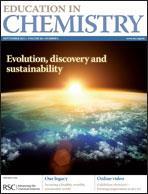Discussion from the magazine, website and social media
Bad Science for Schools

In our September issue, Andrew Hunt wrote about the new lesson plans based on the book by Ben Goldacre.Here is some of the feedback:
I think this kind of teaching is essential and should be started before GCSE. Many children won't take science to GCSE level but everyone is affected by it. Every aspect of modern life is reliant upon science.
All children should be taught how science works. Ignorance of this is a huge handicap in today's world.
Alistair Frith, by email
Coincidentally I saw these lesson resources being launched at the ASE conference and decided I would have a look in September. I started my first lesson with a newspaper critique - the kids looked at the proportion of science content in different papers and then we picked a story and graded it based on a set of criteria I came up with. The kids ended up being harsher on the reporters than I was.
Declan Fleming, on talkchemistry.org
Talk chemistry

Talk Chemistry has been busy this month with ideas for creative problem solving in organic chemistry, discussions on maths for 16-18 year olds, the Nobel prize and more. Here is a selection of posts:
Mistakes
Mark Crookeswrote about 'The Importance of Making Mistakes':
[Here is] the best reason I've read for deciding to study chemistry...
'He figured he would take up physics. "But then," Bill said, "I discovered that I couldn't make mistakes fast enough in physics."' (quotation from 'The Importance of Making Mistakes').
I think it's important to try and encourage pupils to make more mistakes and take more risks in school, what do people think? Has anyone had any successes in doing this?
Do you think pupils should be encouraged to take risks and make mistakes?
Kinetics questions
David Garner wondered if others had the same concerns as him about mechanisms from kinetic data. He started this discussion:
I am concerned about kinetics questions at A-level, where questions are asked about what mechanism is likely based on the orders in the rate equation.
For example, in OCR Chemistry Jan 11 F325 question 1 (about the reaction of NO with H2 to give H2O and N2), it asks for a possible two-step reaction for the overall reaction.
They were looking for (in the rate limiting reaction) H2 + 2NO → N2O + H2O or similar products.
This is not my speciality area so am not sure what is absurd, and what is a recognised and reasonable simplification. It seems not really answerable from what is given even at degree level.
(I thought that tri-molecular collisions were unusual but possible.)
Similar problem with AQA specimen question paper Chem 4 (A2 2010 onwards), Q1biii. Rate limiting step given in answers is wrong, I believe.
What do those who know think?
Others have replied expressing their concerns about the questions. What's your experience?
Spectroscopy in a suitcase
Finally, Richard Grandison asked for help with some ideas:
Here at the RSC we are looking into the possibility of making Spectroscopy in a Suitcase (SIAS) available for A-level students to use during their individual projects.
We were wondering whether you might have any suggestions of projects or topics that SIAS could be well integrated into?
Can you help Richard? What do you find difficult to teach? What is your idea for a great demonstration?
Solid potassium hydrogen sulfite does not exist
I read with great interest about the multiple applications of potassium compounds in everyday life (Education in Chemistry, May 2011, p72). In particular, the use of potassium hydrogen sulfite (KHSO3) as a food additive particularly attracted my attention because, although the hydrogen sulfites of sodium and potassium are widely believed to be stable compounds, they have never been isolated as pure solids.1, 2
Indeed, when their aqueous solutions are concentrated to crystallise the compounds, dehydration takes place and the metabisulfites or disulfites (M2S2O5) are isolated.3
The fact that MHSO3 (M = Li, Na and K) have never been isolated as pure solids, while the hydrogen sulfites of larger cations such as rubidium and caesium are known, can be explained by means of a thermodynamic cycle and used as an interesting teaching activity.1, 2
Aqueous solutions of KHSO3 can be obtained by dissolving K2S2O5 in water or by reaction of SO2 with KOH, KHCO3 or K2CO3. Nevertheless, evaporation of KHSO3 solutions gives rise to solid K2S2O5. Therefore, unless it is supplied in solution, the food preservative E228 (KHSO3) is indeed the same as E224 (K2S2O5). In the same way, E222 (NaHSO3) is probably the same as E223 (Na2S2O5).
The European Union should revise the list of approved food additives in the light of the known chemistry of hydrogen sulfite salts.
David Tudela, Universidad Autónoma de Madrid, Spain

Top tweets
Here are some of our favourite tweets this month:
- Hearing about the new RSC school teacher fellows, @docgnome said:
I like the teacher fellow idea; has led to some good resources
- @professor_dave supports the UK Chemistry Landscape consultation
If you care about the future of chemistry education, take part in this online consultation
- Our new Exhibition Chemistry video was popular with @anthhard:
I like the magnesium / dry ice demo video! #pimpmydemo
- @bengoldacre shared our Bad Science for Schools article with his 149000 followers:
Ooh some badscience GCSE plans I helped make are out now
Over 900 people visited the Education in Chemistry website that day - thanks Ben!
- @JoBrodie was pleased when we told her that anyone can download the Bad Science lesson plans:
Thanks. I'm also pleased to see that #homeopathy looks like it's going to get a bit of a kicking at GCSE level :)
Follow us on twitter for the latest chemistry education news.
References
- D Tudela, J. Chem. Educ., 2000, 77, 830 (DOI:10.1021/ed077p830.1)
- H D B Jenkins and D Tudela, J. Chem. Educ., 2003, 80, 1482 (DOI: 10.1021/ed080p1482)
- N N Greenwood and A Earnshaw, Chemistry of the Elements (2nd ed), p 719. Oxford: Butterworth-Heinemann, 1997




No comments yet